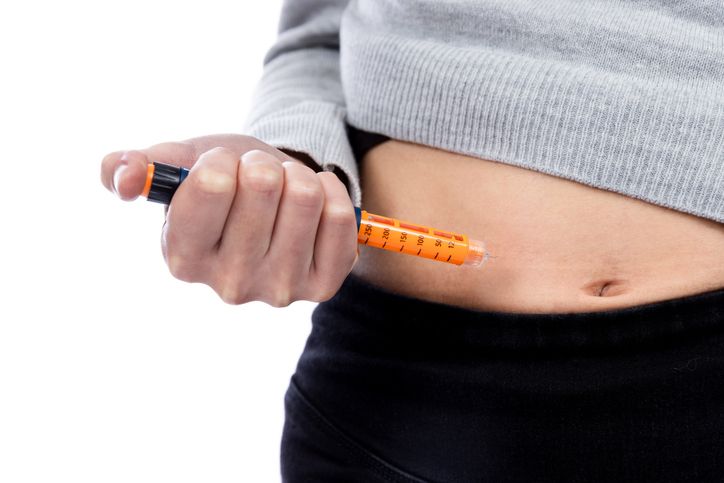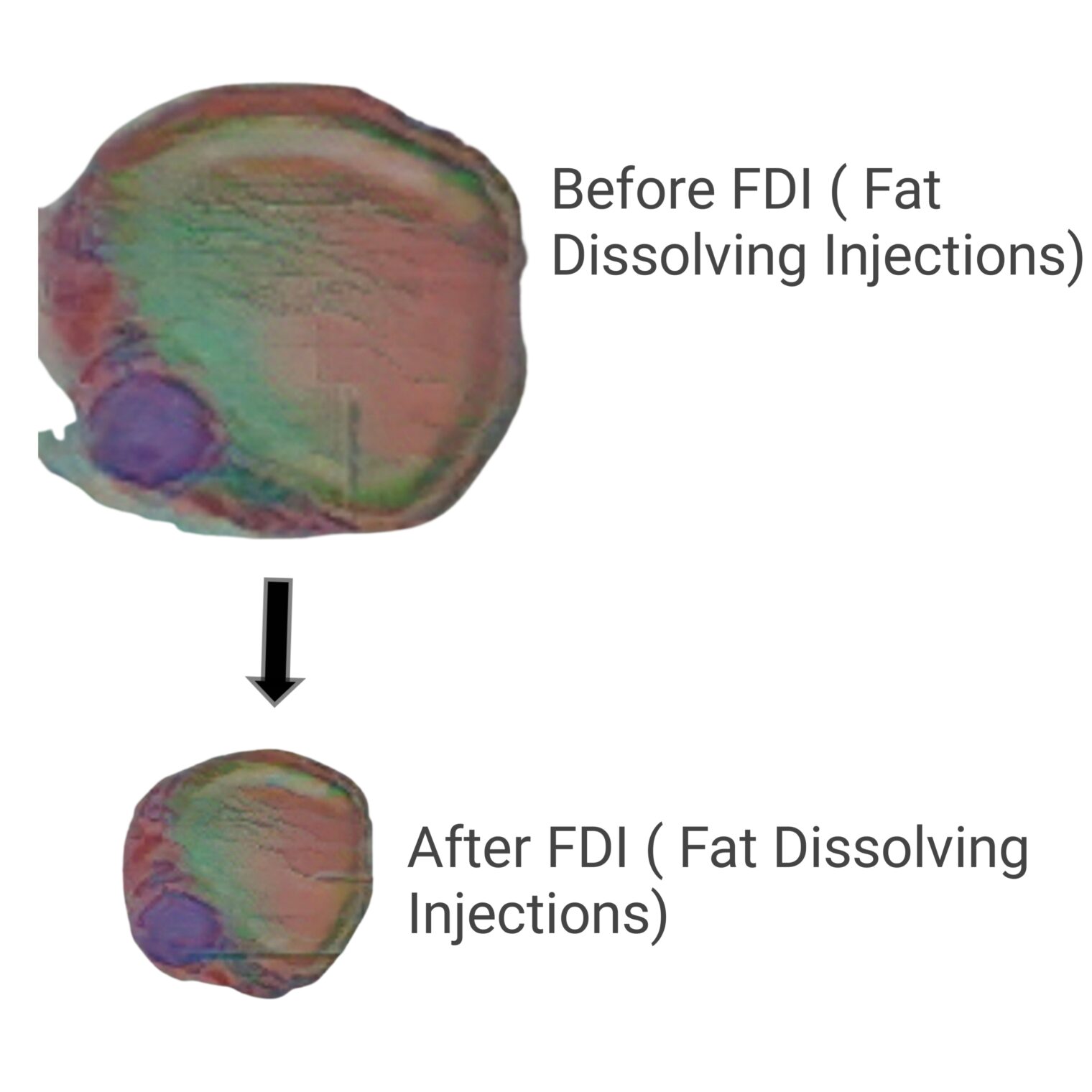
Options abound for stomach injections aiming at weight loss. Different injections serve varied purposes as prescribed by doctors, and your optimal choice depends on factors such as your overall health, potential risks of other conditions, and cost considerations. If weight concerns weigh on your mind, you might be curious about the newer trend of glucagon-like peptide-1 (GLP-1) agonists. These injections, like Ozempic and Wegovy, have gained traction thanks to endorsements by celebrities and social media influencers. Stomach Injections for Weight Loss in Lahore is the best usefull method works properly and also help you to lose their overweight soon. At lemonade clinic in Islamabad, this treatment is providing at reasonable price.
Stomach Injections for Weight Loss Treatment in Pakistan
Explore further to delve into the specifics of these injections, their suitability, effectiveness, and the mechanisms behind their functioning.
Regarding injection sites, while the abdomen remains the primary recommendation for GLP-1 agonists due to its accessibility, alternative sites like the upper arms, outer thighs, upper buttocks, hips, and lower back are also viable options.
Semaglutide:
Semaglutide, a medication mirroring the actions of gut hormones known as incretins, serves to prompt your pancreas in boosting insulin production. Insulin plays a pivotal role, signaling your cells to take in sugar from your bloodstream for energy use.
⦁ Moreover, semaglutide contributes to appetite reduction, potentially resulting in weight loss.
⦁ Market-wise, semaglutide injections are accessible under the brand names Wegovy and Ozempic.
Injections of semaglutide for weight loss
Semaglutide is currently solely authorized for use in weight loss under the Wegovy brand. Subcutaneous (under the skin) self-injections of 2.4 milligrams are the usual weekly dosage for weight loss.
(FDA) Greenlit Wegovy:
In 2021, the Food and Drug Administration (FDA) greenlit Wegovy, a once-weekly stomach injection. Typically prescribed for individuals with obesity defined by a body mass index (BMI) of 30 or higher it can also be recommended for those with a BMI of 27 or higher, coupled with at least one obesity-related comorbidity such as diabetes or hypertension.
⦁ BMI calculations have sparked controversy due to potential biases stemming from weight-to-height ratios.
⦁ Wegovy is administered by doctors in conjunction with lifestyle modifications, encompassing a reduced-calorie diet and heightened physical activity.
Ozempic:
Doctors prescribe Ozempic as a once-weekly injection primarily for individuals with type 2 diabetes who face risks related to cardiovascular issues. Its functions include blood sugar regulation and reduction of hunger sensations, potentially aiding in stroke prevention.
It’s crucial to note that Ozempic isn’t a substitute for insulin. Additionally, although not FDA-approved specifically for weight loss, some doctors may prescribe it off-label for this purpose.
Distinguishing between Ozempic and Wegovy lies in their active ingredient, both containing semaglutide. Physically, their divergence surfaces in their maximum dosage per injection: Ozempic caps at 2 milligrams (mg), while Wegovy reaches a maximum of 2.4 mg.
Functionally, their FDA approvals vary: Ozempic is sanctioned for managing blood sugar levels and reducing the risk of complications such as heart disease and stroke, whereas Wegovy is approved specifically for weight management.
Liraglutide:
Similar to semaglutide, liraglutide, known as Saxenda, triggers insulin production in response to elevated blood sugar levels. It additionally curbs appetite and decelerates digestion, serving a dual purpose in managing blood sugar and facilitating weight loss.
When coupled with a tailored diet and exercise regimen, liraglutide aids weight loss in individuals aged 12 and above grappling with overweight or obesity, assisting in preventing weight regain.
A 2022 Belgian study observed 115 participants with a median BMI of 34.8, revealing a median body weight reduction of 9.2% after 4 months of liraglutide use. Supported by a 2017 literature review, liraglutide not only proves effective in weight loss but also demonstrates benefits in blood sugar control.
Liraglutide is also marketed under the brand name Victoza, but Victoza lacks FDA approval for weight loss purposes. Instead, it assists individuals aged 10 and above in managing type 2 diabetes.
Tirzepatide:
Tirzepatide, known as Mounjaro, sets itself apart from other GLP-1 agonists by functioning as both a glucose-dependent insulinotropic polypeptide (GIP) agonist, enhancing its effectiveness. Initial studies indicate that some individuals experienced weight loss exceeding 20% over 72 weeks (approximately 18 months).
Mounjaro has FDA approval for aiding individuals in managing blood sugar levels for diabetes. While its primary approval is for diabetes management, some doctors may prescribe it off-label for weight loss if conventional methods prove ineffective. Recent clinical trials have wrapped up, and the manufacturers anticipate FDA approval by late 2023.
Administered via a once-weekly injection, tirzepatide operates by slowing down digestion, prolonging the feeling of fullness. When paired with appetite suppression, diet, and exercise, this mechanism can contribute to weight loss.
Botox:
In contrast to other treatments, botulinum toxin, commonly known as Botox, diverges as it doesn’t belong to the GLP-1 agonist category but rather is a potent neurotoxin derived from the bacterium Clostridium botulinum.
Botox finds applications both in cosmetic and therapeutic realms, addressing concerns like facial wrinkles, migraines, spastic disorders, and various medical conditions by inducing temporary muscle paralysis.
Some individuals with obesity explore Botox as a potential aid in weight loss. However, studies investigating its efficacy have yielded conflicting results. A 2017 review encompassing six clinical trials concluded that Botox didn’t significantly contribute to weight loss among individuals with obesity.
Conversely, a 2022 review of trials presented a contrasting viewpoint, suggesting weight loss among certain individuals with obesity following Botox injections, particularly when coupled with dietary management. However, the researchers acknowledged the limitation of relatively small-scale trials in their assessment.
Do Injectables for Weight Loss Work?
Regretfully, there is currently no long-term data regarding safety or long-term side effects, despite the significant increase in the use of injections for weight loss, such as semaglutide (Ozempic) and others. Furthermore, although they do cause some weight loss up to 10 kg at 12 months when compared to a placebo these effects are typically transient.
What’s the top injection for weight loss?
The FDA has approved only two stomach injections, semaglutide (Wegovy), and liraglutide (Saxenda), to aid weight management. However, extensive studies on individuals without overweight or obesity are lacking for both medications.
According to a 2022 literature review, Wegovy showcased superior weight loss efficacy compared to a placebo and other antidiabetic drugs. Individuals also experienced more substantial weight loss with Wegovy than with Saxenda.
Moreover, Wegovy demonstrated a reduction in the risk of death due to heart attack among individuals dealing with diabetes along with overweight or obesity. The study also indicated declines in nonfatal heart attack and stroke rates.
Notably, the study didn’t encompass Mounjaro. Recent research in 2022 found that the lower dose of tirzepatide (5 mg) matched the effectiveness of the 2-mg dose of semaglutide, with the higher doses (10 and 15 mg) proving more effective.
However, this comparison was indirect as the two drugs weren’t directly pitted against each other. As a result, other researchers have emphasized the necessity for a head-to-head comparison to better assess their effectiveness.
What potential side effects might you encounter with weight loss injections?
The side effects can vary based on the specific injection you receive.
Generally, side effects associated with GLP-1 agonists include:
⦁ Nausea
⦁ Vomiting
⦁ Diarrhea
⦁ Dizziness
⦁ Increased heart rate
⦁ Headache
⦁ Stomach upset
⦁ Infection
Moreover, there might be an elevated risk of thyroid cancer and medullary thyroid cancer, particularly after using GLP-1 agonists for 1 to 3 years.
It’s crucial to seek immediate medical attention if:
⦁ Severe abdominal pain occurs
⦁ Allergic reactions like swelling in the eyes, mouth, throat, face, ankles, feet, or legs arise
⦁ Breathing or swallowing problems emerge
⦁ Symptoms like fever, jaundice, or clay-colored stools manifest
Botox injections generally pose minimal risk of serious side effects when utilized for weight loss. Minor side effects like headaches might occur, and in rare cases, individuals may experience an allergic reaction.
Cost of Weight Loss Injections:
The cost of weight loss injections can vary significantly due to several factors, notably influenced by your insurance coverage. Some insurance plans may not cover these injections unless specifically prescribed for certain medical conditions. Currently, there are no generic versions available, resulting in GLP-1 agonist injections often priced at over $1,000 per month.
Here are the approximate costs for a typical monthly supply as of May 2023:
⦁ Ozempic: $935
⦁ Mounjaro: $1,023
⦁ Wegovy: $1,349
To explore your options, it’s advisable to discuss with both a doctor and your insurance providers. Prior approval from your insurance plan might be necessary to ensure coverage before commencing treatment. Additionally, some drug manufacturers might offer temporary savings programs, depending on your insurance coverage.
Takeaway:
The latest stomach injection treatments offer potential weight loss benefits for individuals dealing with overweight or obesity. As of May 2023, only semaglutide (Wegovy) and liraglutide (Saxenda) boast FDA approval along with demonstrated effectiveness backed by research. However, doctors might prescribe alternative options off-label.
It’s essential to note that these medications are sanctioned for individuals with obesity or overweight conditions. Limited research exists regarding their efficacy among individuals with a lower BMI.
To Be Aware

What effects are diets such as keto, low-protein diets, low-carb or HCG diets, aerobic or gym classes, cavitation therapy (by Mechine), fat freezing, fat laser, and slimmers diet programs having on fat cells?
You Did 3-4 Month Efforts

Fat Cells Shrinked To 80% Percent: Loss Water/ Volume

The important point is fat cells never lost its DNA or structure and cellular membrane. So once you start eating normal/ you stop gym or all other dieting methods then the fat cell starts going it structure/ starts swelling to its original shape. And then you will see all the clients gaing weight and swelling back on their body.
See diagram below

However, while receiving fat-dissolving injections any brand make sure all of your body’s fat cells are broken down correctly. It will permanently exit your body through your urine, stools, and overall system.
Additionally, it permanently dislodges cells and detects changes in inches. You have no risk of developing problems with your kidneys, heart, or liver if you decide to lose weight using FDI.
The most important thing to keep in mind following fat-dissolving injections is that the fat cells never grow back to their original size or regain their original structure. At that point, you’ll see that any physical edema has vanished along with all of your excess fat.

**In the next post, we will explain in detail on Stomach Injections for Weight Loss in Lahore**